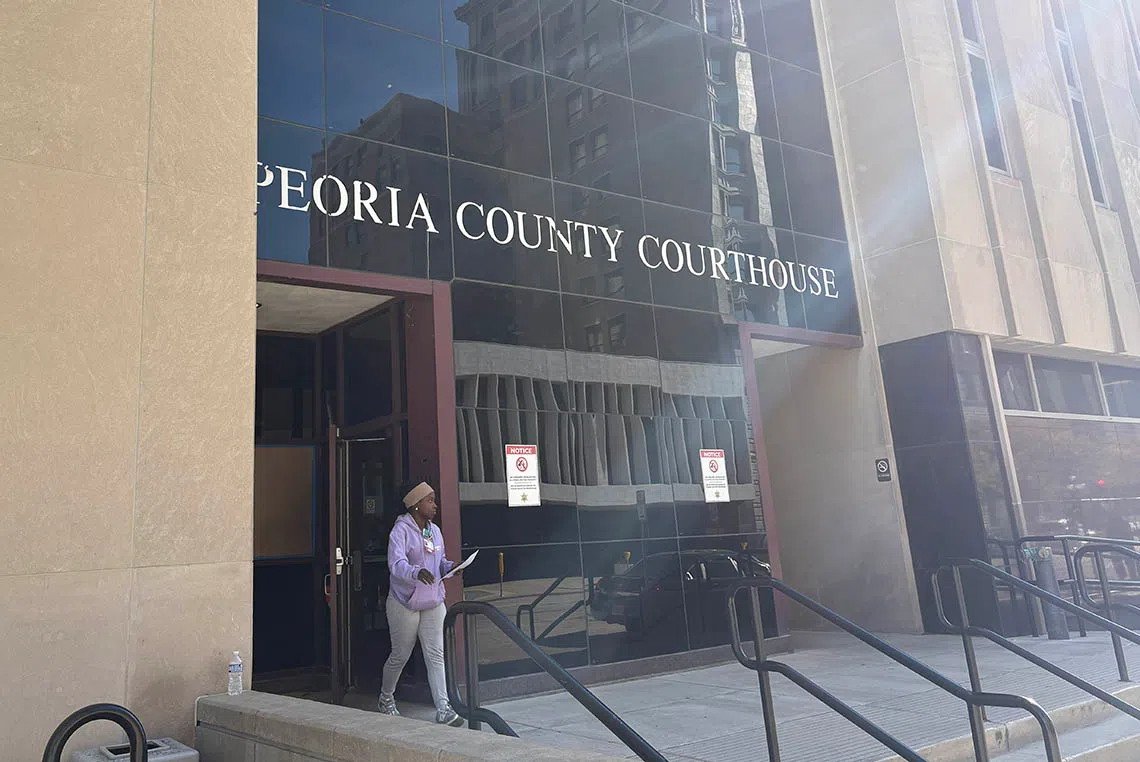PEORIA, Ill. (WMBD) — Looking at the totality of the circumstances, Sean Grayson made several tactically “unsound” decisions leading up to the deadly shooting of Sonya Massey.
And he didn’t see or didn’t act on several signs that the Springfield woman was having mental or cognitive issues.
That’s the opinion of a University of South Carolina law professor who is an expert in police tactics and also the use of force. He was the opening witness on day five of Grayson’s murder trial.
Grayson is accused of murder as Sangamon County prosecutors believe he acted improperly. For his part, Grayson argues he was acting in self-defense as he feared being scalded by a pot of boiling water held by Massey.
But Seth Stoughton said Grayson’s own actions escalated things.
Seth Stoughton, is also the faculty director of the Excellence in Policing & Public Safety (EPPS) Program as well as teaching undergraduate classes.
He said Grayson’s actions that night were not professional within the context of generally accepted practices.
“Drawing a weapon was not beneficial. Escalating with a show of force or verbal commands, it increases the possibility of a bad outcome. You are not going to see the level of compliance as someone who is not experiencing a mental health issue,” he said.
When asked by State’s Attorney John Milhiser about the deputy’s movement to close the distance with Massey as she held the pot, Stoughton said that was tactically unsound.
Beyond that, it was fairly clear that by the time she was shot — 12 minutes into the encounter — the deputies should have known she was having issues, he said.
“An officer applying general practices could have realized Massey was dealing with some kind of mental health or cognitive episode,” Stoughton said.
“Was threatening to shoot her in the face tactically unsound?” Milhiser asked.
Stoughton said yes, saying, “it made things worse.”
Then he asked, “Is it your professional opinion the defendants actions led to the shooting of Sonya Massey?”
Stoughton said, “Yes.”
Grayson’s body camera wasn’t activated until 12 minutes or so into the encounter with Massey. The deputies had been called to the house to look for a prowler outside. Finding none, they went to her door, knocked several times and waited a few minutes for her to answer.
Jurors were shown the videos several times. The sound from the cameras was much louder and, at times, jarring.
Within 15 seconds of Grayson’s camera being activated, Massey was shot.
The law professor broke down the body camera footage of the two deputies. It was shown side by side in court.
He praised Deputy Dawson Farley’s actions to move away from Massey initially and then later when she picked up the pot of boiling water, saying it reduced the threat. Grayson moving towards her, he said, wasn’t tactically sound.
“The appropriate response is to mitigate that risk, by moving back,” Stoughton said when referencing the moment Massey grabbed the pot again and could have thrown it.
The professor also criticized Grayson’s movements within Massey’s house. After he draws this weapon, Grayson moves in front of his partner, Farley, a move that Stoughton said was not good for a variety of reasons.
It took Farley out of the situation as he couldn’t see due to Grayson being in front and it also put Grayson at risk of being shot, he said.
And it was Grayson who moved closer to Massey after she “reacquired” the pot of boiling water. That elevated the risk of him getting hurt and put him into an “imminent threat” of being harmed.
But he also said that end result can’t be taken by itself. Rather, he said, the totality of the situation — her mental state, use of profanity, drawing a weapon, moving too close — also needs to be considered as to what was professional or not.
The court took a lunch break and will return at 1 p.m. for the defense cross-examination.
WMBD TV can be reached at News@WJBC.com.





